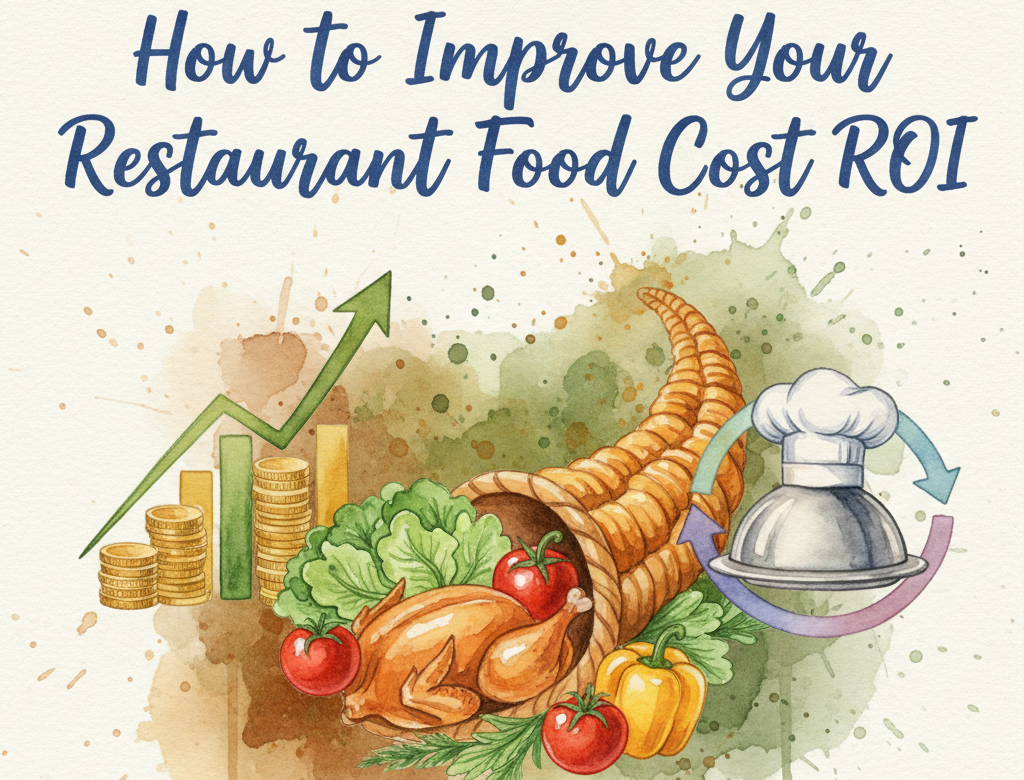If you manage a food business, you know that controlling costs is key to making a profit. One of the biggest expenses you deal with is labor. Understanding your labor cost percentage helps you see how much you spend on staff compared to your sales. When this number is too high, it eats into your profits. When it’s too low, you might not have enough staff to keep things running smoothly.
In this blog, we’ll explain labor cost percentage, how to calculate it, why it matters, and what the ideal range looks like. We’ll also share tips on keeping it under control and how a good POS system can help.
What Is Labor Cost Percentage?
Labor cost percentage is the portion of your total sales that goes toward paying your employees. This includes wages, salaries, overtime, bonuses, and benefits like health insurance or paid time off.
For example, if you spend 3000RM on labour in a week and your sales are 10,000RM, then your labor cost percentage is 30%. This number helps you see whether you’re spending too much or too little on staff.
How to Calculate Labor Cost Percentage
Calculating your restaurant labor cost percentage helps you understand how much of your sales go toward paying your staff. The formula is simple:
Labor Cost Percentage = (Total Labor Cost / Total Sales) x 100
Here’s how to do it step by step:
First, add up all labor costs for a specific period—weekly, monthly, or yearly. This includes wages, salaries, overtime, bonuses, and benefits like EPF or SOCSO contributions. For example, if you paid RM15,000 in wages, RM2,000 in overtime, and RM1,000 in benefits, your total labor cost is RM18,000.
Next, calculate your total sales for the same period. If your restaurant made RM60,000 in that month, that’s your total sales.
Now, divide your total labor cost by total sales:
RM18,000 / RM60,000 = 0.30
Finally, multiply by 100 to get the percentage:
0.30 x 100 = 30%
This means 30% of your sales went toward labor costs. Keeping this percentage in check ensures you’re not overspending on staff while still providing good service. Tracking it regularly helps you make smart decisions about scheduling and hiring.
Why Restaurant Labor Cost Percentage Matters
Understanding and monitoring your restaurant labor cost percentage is one of the most important financial practices for your business. This key metric directly impacts several critical areas of your operations, from profitability to customer satisfaction. Let’s examine why keeping a close eye on this percentage should be a top priority.
Profit Control Through Labor Cost Management
Your labor cost percentage has a direct relationship with your overall profits. When this percentage climbs too high, it eats into your bottom line, leaving you with less money after covering all expenses. For example, if your labor costs jump from 30% to 40% of sales without a corresponding increase in revenue, that extra 10% comes straight out of your potential profits.
On the flip side, cutting labor costs too aggressively can hurt service quality. If you reduce staff to keep labor costs at 20% but then struggle with slow service, messy tables, or kitchen backups, customers will notice. Poor service leads to negative reviews and lost repeat business, which ultimately hurts sales. Finding that sweet spot where you have enough staff to deliver great service without overspending is crucial for maintaining both profitability and customer satisfaction.
Better Budgeting and Staff Planning
Knowing your typical labor cost percentage helps you create more accurate budgets and staffing plans. When you understand that labor usually accounts for 30-35% of your sales in a full-service restaurant, you can forecast future payroll expenses based on expected revenue. This prevents situations where you either overschedule staff during slow periods or find yourself shorthanded during rushes.
Historical labor cost data also helps you make smarter hiring decisions. If you’re planning to expand hours or add new menu items, you can estimate how these changes might affect your staffing needs while keeping labor costs within your target range. This proactive approach to budgeting prevents financial surprises at the end of each pay period.
Strategic Menu Pricing Based on Labor Costs
Your labor cost percentage plays a key role in determining appropriate menu prices. As wages increase or your staffing needs change, you may need to adjust prices to maintain healthy profit margins. For instance, if rising minimum wage laws push your labor costs higher, analyzing your labor cost percentage can show exactly how much you need to increase prices to offset these additional expenses.
This metric also helps identify which menu items are most labor-intensive to prepare. Dishes that require significant prep time or special skills might need higher price points to justify their labor costs. By understanding how different items affect your overall labor percentage, you can make informed decisions about menu engineering and pricing strategies.
Identifying Operational Problems Through Labor Costs
A sudden spike in your labor cost percentage often signals underlying operational issues that need attention. If you notice an unexpected increase, several potential causes could be at play:
Excessive overtime is one common culprit. When employees regularly work beyond their scheduled hours, those overtime wages can quickly inflate your labor percentage. This might indicate poor scheduling practices or insufficient staffing during key periods.
Overstaffing during slow shifts is another frequent issue. Having too many employees on the clock when customer traffic is light means you’re paying for labor you don’t need. Your labor cost percentage helps spot these inefficient scheduling patterns.
Time theft can also distort your labor costs. When employees clock in early, take extended breaks, or have friends clock them in when they’re not working, these practices artificially increase your labor expenses. Monitoring your labor cost percentage helps flag these problems before they become significant financial drains.
Industry Benchmarks for Labor Cost Percentage
According to the National Restaurant Association, full-service restaurants typically maintain labor costs between 30-35% of total sales. This range allows for adequate staffing to provide quality table service while keeping the business profitable. Quick-service and fast-food establishments generally operate with lower labor percentages, around 25%, due to their more streamlined operations and higher customer turnover.
These benchmarks provide useful reference points, but your ideal labor cost percentage may vary based on your specific concept, location, and service style. Regularly tracking and analyzing your numbers helps you establish what works best for your unique operation while staying competitive in your market segment.
What Is the Ideal Labor Cost Percentage?
The ideal labor cost percentage depends on your type of business:
Full-service restaurants – 25% to 35%
Quick-service restaurants – 20% to 30%
Fast-casual restaurants – 25% to 30%
These ranges give you enough staff to provide good service without hurting profits. If your labor cost percentage is higher than this, you may need to make adjustments.
How to Keep Restaurant Labor Cost Percentage in the Ideal Range
Managing your restaurant labor cost percentage effectively means finding the right balance between having enough staff to provide excellent service while not overspending on payroll. Cutting staff or hours without a strategy can hurt service quality and customer satisfaction. Instead, use these smart approaches to maintain your ideal labor cost percentage while running your operations smoothly.
Track Sales and Staffing Trends
Understanding when your restaurant is busiest and slowest helps you schedule staff more efficiently. Review historical sales data to identify patterns; certain days of the week, holidays, or meal periods may consistently bring in more customers. By scheduling more employees during peak hours and reducing staff during slower times, you can align labor costs with actual demand. Many restaurants see higher traffic on weekends or during dinner service, so adjusting schedules based on these trends prevents overstaffing during quiet periods and understaffing when you need more hands on deck.
Control Overtime Expenses
Overtime pay can quickly inflate your labor cost percentage. When employees work beyond their regular hours, their increased wages directly impact your payroll expenses. To prevent unnecessary overtime, set clear policies on when overtime is allowed and monitor employee hours closely. If you notice staff approaching overtime, consider adjusting shifts or redistributing tasks to other team members. Tracking their working hours using a good restaurant management software can help you receive alerts before overtime becomes an issue, allowing you to make timely adjustments.
Cross-Train Employees for Flexibility
Having employees trained in multiple roles increases operational flexibility without requiring additional hires. For example, a server who can also assist with hosting duties or food prep allows you to manage busy periods without scheduling extra staff. Cross-training also helps when unexpected call-offs or last-minute rushes occur, as employees can step into different roles as needed. This approach reduces the need for excess labor and keeps your restaurant labor cost percentage within the ideal range.
Use Technology to Optimize Labor Costs
A modern POS system does more than process transactions—it can be a powerful tool for managing labor costs. Advanced POS systems provide real-time tracking of employee hours, helping you monitor labor expenses as they happen. Features like work hour tracking can help in avoiding buddy punching. Some systems can even help you in monitoring the attendance of your employees across all your outlets.
Optimize Shift Lengths for Efficiency
Instead of scheduling long, continuous shifts, consider implementing shorter, overlapping shifts during peak hours. This ensures you have enough staff during busy periods without paying employees for extended downtime. For example, having one employee cover the lunch rush and another take over for dinner service can be more cost-effective than keeping the same staff all day. Adjusting shift lengths based on customer flow helps maximize productivity while keeping your restaurant labor cost percentage in check.
Monitor and Improve Employee Performance
Inefficient employees can unknowingly increase labor costs. If certain team members work more slowly than others or require constant supervision, they may be contributing to higher payroll expenses without matching productivity. Providing additional training can help improve efficiency, while performance reviews can identify areas where employees may need support. If inefficiencies persist, adjusting staffing levels or reassigning roles may be necessary to maintain an ideal labor cost percentage.
How a POS System Can Help in Reducing Labour Cost Percentage
A smart POS system can significantly cut labor costs by automating tasks typically handled by employees. With digital ordering, fewer staff are needed between the kitchen and front-of-house. eliminates manual inventory tracking with real-time updates, and handles table management without a host. Automated reporting replaces accounting hours, while integrated payroll reduces HR workload. By taking over these repetitive tasks, your team can focus on customer service while you save on labor expenses. This efficiency gives you peace of mind and more time to strategize business growth rather than managing daily operations.
Frequently Asked Questions
Managing labor cost percentage is crucial for keeping your business profitable. By calculating it regularly, adjusting schedules, and using technology like a POS system, you can keep costs in the ideal range without sacrificing service.
Start tracking your labor cost percentage today and make small adjustments to see big improvements in your profits.




